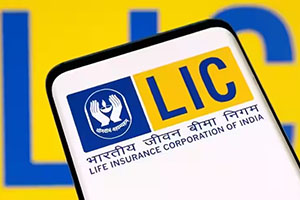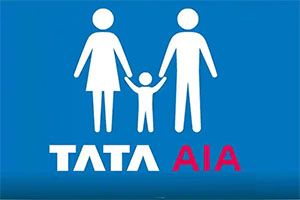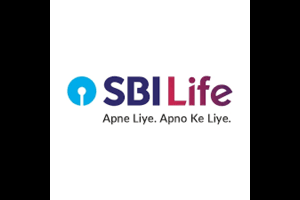How to Claim Term Insurance After Death?
Term insurance is a life insurance plan that offers death benefits to the concerned beneficiaries if the policyholder passes away when the policy is active. The process involves a systematic approach with all necessary documents for verification. Understanding this process helps the beneficiary avoid critical mistakes that can unwantedly delay the settlement for the family during a challenging time. Let’s understand how the entire settlement process works, with tips to overcome the challenges involved with ease.

Immediate Steps Following the Policyholder's Death
It is significant to follow certain steps after the demise of the policyholder before initiating the claim process.
1. Notify Family Members And Beneficiaries
First, family members and the beneficiaries should be aware of the details of the term insurance policy, including the sum assured and the process of filing a death claim.
2. Locate The Insurance Documents
Gather all the necessary documents required for the processing, such as:
- Policy certificates
- Premium receipts
- Policy-related paperwork
Also, keep digital copies of these documents as a backup so that insurance officials can easily handle the process.
3. Obtain the Death Certificate
To claim insurance, it is mandatory to obtain the death certificate of the policyholder from the local authorities. You can apply for the certificate online from your state government’s official website or offline by submitting the application to the concerned state department office.
Initiating the Death Claim Process
Once you have all the necessary paperwork with you, follow these steps to initiate the death claim process.
1. Contact the Insurance Company Or Agent
Contact the insurer company and let them know about the status of the policyholder. Then, you can either call their customer care support, visit the branch office, or contact the assigned agent.
2. Provide All Information
To initiate the process, the insurance company will require certain information, such as:
- Name of the policyholder
- Policy number
- Date, location, and cause of death
- Contact details of the beneficiaries
- List of available documents (e.g., death certificate, policy document)
Providing clear and accurate information will help the insurer to smoothly guide you through the next steps of the claiming process.
3. Completing the Claim Intimation Form
This document officially begins the death claim process, and the insurer has all the necessary information to process these documents.
Carefully verify all information before submission to avoid errors that could delay the death claim approval process.
Essential Documents Required For Claim Submission
This is a complete list of documents the insurance company will require to smoothly initiate the claim process.
| Death Types | Documents Required |
| Mandatory Documents |
|
| Additional Documents Required: | |
| In case of Medical/Natural deaths |
|
| In case of accidental/unnatural deaths |
|
Note:
- Passport and Aadhaar cards can be used to verify the relationship between policyholders and beneficiaries.
- If the nominee is absent, then the succession certificate or probate of a will proof is required to confirm the beneficiary’s relationship with the late policyholder.
Submitting the Claim
According to the convenience of the beneficiaries, insurance companies provide multiple choices for submitting the death claim.
- Online: You can upload scanned copies of documents on the official website or app of the insurance company.
- In-person: You can visit the branch to submit the death claim documents with a physical application.
- By mail: You can also send hard copies and the application of the death claim via courier or post.
Simply pick the method that is convenient for you and provide all necessary documents so that any delays are avoided.
Note: After submitting the application, you will get a receipt of the acknowledgement with a reference number (also known as the claim number), which is important to track the status of the claim in future.
Claim Assessment And Verification Process
Once all the necessary paperwork is complete, the insurance company starts the verification process. The process might take a few weeks to months, depending on the potential challenges involved.
For instance, if you file a death claim within three years of policy issuance or under suspicious circumstances, the insurer may investigate the application. This process typically involves:
- Reviewing the policyholder’s medical records to verify the cause of death
- Cross-checking details with hospitals or local authorities for validation
- Obtaining an FIR and post-mortem report in cases of unnatural death, such as suicide or murder
- Engaging third-party investigators for additional verification if necessary
These investigations, while routine, may extend the claim settlement timeline, especially in complex cases.
Throughout the claim assessment, the insurance company constantly sends updates to the beneficiaries regarding the status of their application. Sometimes, the company may request additional documents for any clarification, if required.
Settlement Options For Beneficiaries
The beneficiary can collect the settlement amount in the following two options.
1. Lump-Sum Payment
The most common settlement option for beneficiaries is a lump sum payment. Here, the insurer pays the whole sum assured in one go.
2. Annuity Or Installment Options
In this case, the insurance company clears the policy amount in instalments over a specific time. With this option, the insurer will either give you monthly, quarterly or annual payments.
Tips for Choosing the Correct Settlement Method
- Evaluate immediate financial needs: A lump-sum payment is helpful if the beneficiary has ongoing debts, medical bills or household expenses.
- Look for long-term stability: Installment options are useful when the beneficiary needs a steady income to manage their finances over time.
- Consider taxes: Consult a financial advisor to understand the tax implications of both options to get further clarity.
Timeframe For Claim Settlement
During tough financial situations, timely claim settlements are important for support. Let’s understand what is the typical timeline for claim settlement and how to avoid critical mistakes that may delay the process.
Regulatory Guidelines On Claim Settlement Periods
IRDAI guidelines mandate insurers to process valid claims within 30 days of receiving all necessary documents. If further investigation is required, the insurer can take additional time, but the process should be completed within 90 days. Also, the insurer should maintain transparency with the beneficiary throughout the process with regular updates on the claim progress.
Factors Causing Delays In The Process
Delays in claim settlement can occur due to:
- Incomplete documentation: Missing or incorrect documents can stop the process in the middle.
- Disputes over nominees: Legal disagreements about the right beneficiaries can extend the timeline.
- Further investigation requirements: Claims filed shortly after policy issuance or under unusual circumstances may require thorough scrutiny.
- Policy-specific clauses: Conditions such as exclusions or waiting periods may cause delays.
So, to avoid delays, it is necessary to have proper documentation and address the potential issues with prompt actions.
Beneficiary Rights In Case Of Undue Delays
Beneficiaries can expect insurers to process claims on time. If the process is unduly delayed, the beneficiary has the right to:
- File a grievance: Grievances can be filed directly by the beneficiary with the insurer through customer service or the complaint channels.
- Take the help of higher authority: If the problem still remains, the beneficiary can approach the higher insurance regulatory authority to take further action.
- Take legal consultation: In the worst-case scenario, the beneficiary may seek legal help to ensure a fair resolution.
Tax Implications Of Term Insurance Payouts
The death benefits of a term insurance policy under Section 10(10D) of the Income Tax Act are fully tax-exempt in India. This means the whole sum assured is exempt, and no deductions are made to the beneficiaries. However, term insurance payouts might also involve tax liabilities under certain circumstances. Let’s quickly have a look at some important rules useful for avoiding odd tax surprises.
Scenarios Where Tax May Be Applicable
- Policies issued before April 1, 2003: Certain older policies may not qualify for tax exemption under the latest rules.
- Non-compliance with premium-to-sum ratio: If the annual premium exceeds 10% of the sum assured, the payout may attract tax.
- Proceeds from assigned policies: In cases where the policy is assigned to a third party, such as a bank or creditor, the payout might be taxable.
So, it is a wise call to get in touch with a tax professional beforehand to understand the tax implications clearly.
Common Challenges and How To Address them
In most cases, the settlement process gets delayed because of some dispute or documentation gap in insurance claims. Let’s learn to recognise and address them proactively.
Disputes Over Beneficiary Designation
When there is a contest over who can receive the death benefits, disputes about beneficiary designation exist. These issues are often due to:
- The absence of a clearly named nominee in the policy.
- Outdated beneficiary information that creates confusion over rightful ownership.
Missing Or Incomplete Documentation
Missing or incomplete documents, such as death certificates, policy papers, and identity proofs of the beneficiary, can cause claim delays.
Contestability Period Issues
Insurers have a very strict policy of investigating claims in the first 2-3 years of an insurance policy (known as the contestability period). During this period, claims might be scrutinised more thoroughly if they look like they could be against the letter of the law or did not include facts that you were supposed to disclose.
Some important IRDAI guidelines to keep in mind:
- Insurers cannot deny claims due to non-disclosure or misrepresentation after eight years of continuous policy coverage (moratorium period), except in cases of fraud or claims outside the policy’s exclusions.
- During the contestability period, insurers validate the policyholder’s details but must settle genuine claims within 30-45 days after receiving the final required document.
Steps To Resolve Claim Denials Or Disputes
In rare cases, claims may be denied due to policy exclusions, documentation gaps, or disagreements.
How to address it:
- Understand the reason for denial: You can request a written explanation from the insurer to know the reason behind denying the claim.
- Provide additional evidence: Identify the missing document and submit it in the claim application.
- Escalate the issue: As we discussed above, the beneficiary can file a grievance. If the problem is still not over, you can file a formal complaint to IRDAI or alternatively find a lawyer for directions.
IRDAI rules for settlements: If a claim is approved and the insurer then delays payment, they must pay interest at a 2% rate higher than the prevailing bank rate. This rule ensures accountability and timely settlements.
Tips For A Smooth Claim Process
Here are some valuable tips on how to quicken the claim process.
- Complete the claim form with the correct details for fast processing.
- Double-check all details, especially bank account information, to avoid errors, delays, or rejections.
- Keep extra copies of documents in advance to avoid last-minute hurdles.
- Regularly follow up with the insurance company to track the progress.
- Consider hiring a financial advisor or legal professional to save time on unwanted processing delays and errors.
Conclusion
The death claim process can be overwhelming for beneficiaries without the right guidance. However, with a systematic process, everything goes smoothly. All it requires is doing this promptly, giving notice to the insurance company about the claim, sending in proper documents, and deciding on the right type of settlement. Even so, it is also vital that you have all the knowledge about your policy terms, coverage and procedure on hand so you can deal with anything related to your policy you cannot foresee.




























































